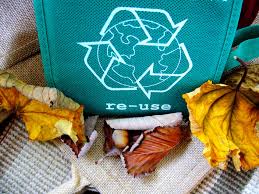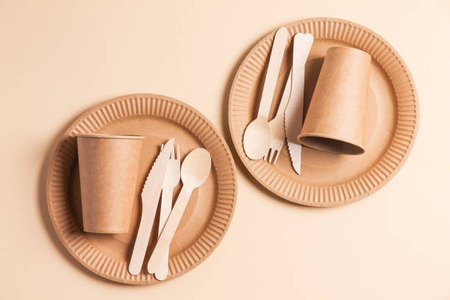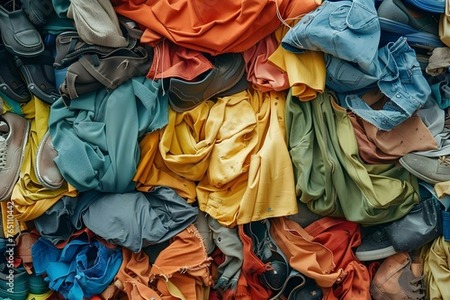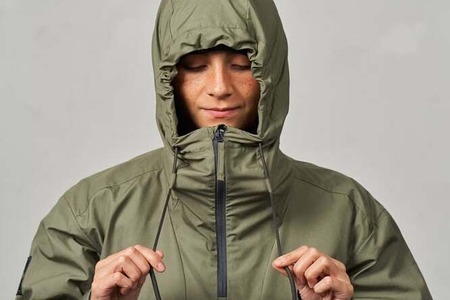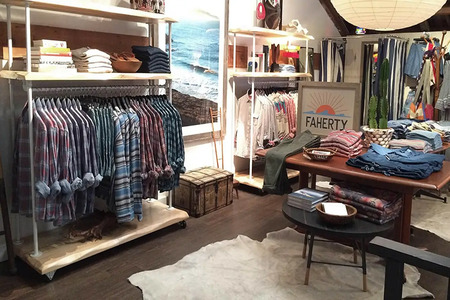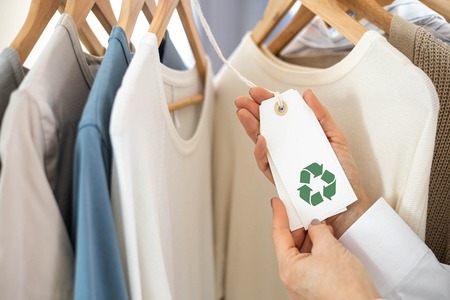When it comes to recyclers’ activities, much attention is focused on recovering metals or the ‘new gold’, plastics. And yet, there have been several significant innovations on the textiles front in recent months. Read on for a comprehensive update on these latest developments.
upwards of 100 billion pieces of clothing every year, represents 3% of the world’s GDP and employs around 75 million people. The USA alone generates around 15 million tonnes of textiles waste annually. Today, not even 5% of materials within the US$ 1.9 trillion global fashion industry get recycled. But that may be about to change.
From denim to synthetic cartilage
A group of researchers and scientists at Australia’s Deakin University has found a way to transform natural, dyed or blended fibres into various valuable products such as artificial joints. The innovative process breaks down fabrics to their chemical level, says Associate Professor Dr Nolene Byrne. Denim was an obvious starting point for the R&D project because it is made from cotton, a natural polymer comprised of 90% cellulose. ‘Cellulose is a versatile renewable material,’ she states.
The Australian specialists managed to dissolve denim with eco-friendly liquid solvents and manipulate the remains into an aerogel. Byrne notes that aerogels are a class of advanced materials with very low density, sometimes referred to as ‘frozen smoke’ or ‘solid smoke’. When the researchers were reforming the cellulose, they got something unexpected – ‘an aerogel with a unique porous structure and nanoscopic tunnels running through the sample’, Byrne reports.
She believes the sticky nature of the denim cellulose solution is what yielded a delicate yet powerful aerogel structure ‘ideally suited’ for use as synthetic cartilage. Indeed, artificial knee designs have proved successful. Deakin reseachers are now able to mould and tune the aerogel to create any desired shape. Byrne says other potential applications include separators in advanced battery technology and membranes used in water filtration systems.
Sorting a garment per second
One big issue is the cost of sorting. It is labour-intensive and currently requires each item to be picked up and individually assessed for quality, style, garment type, market and other attributes. For used clothing that has a value, this is economically viable if it is done properly.
But the economics are questionable if you want to separate out worn-out items by, for example, fibre type and colour, especially when some products don’t actually contain the fibres in the proportions stated on their labels.
One possible solution is the Fibresort technology being developed by Circular Economy in the Netherlands. This is able to take a mix of low-value textiles which has not gone through a detailed sort itself but which has been separated from the high-quality reusable items and then using.
Once fed into the machine, the mixed textiles pass through an optical detection system which deciphers the fibre mix of each textile item, before being passed along a belt and sorted automatically by a pressurised air system.
Its developer Valvan reports that this machine can sort one garment per second – approximately six times faster than if done by a human. The optical detection system can be calibrated to sort textiles into the different desired categories and blends of fibres. Also, because the system is modular, the number of categories into which the machine can sort can be enhanced by expanding the recycling line and increasing the number of sorting containers.
Tackling polyester and cotton
Worn Again Technologies, a London-based start-up firm, has recently hit its £5 million (US$ 6 million) investment target to support the commercialisation of a brand new polymer recycling technology. Its patented method is the result of six years of R&D work.
The Worn Again process can separate, decontaminate and extract polyester polymers and cellulose (from cotton) from non-reusable textiles, as well as plastic bottles and packaging, to go back into new products as part of a repeatable process. The main output materials are circular PET pellets and cellulosic pulp.
‘Our first industrial demonstration plant will be opened in 2021,’ says company ceo Cyndi Rhoades. She stresses that polyester textiles and cotton together represent 80% of all clothing and textiles on the market. Worn Again Technologies is one of the first chemical recycling technology companies to be Cradle to Cradle certified.
A passport for your clothes
Natasha Franck, founder and ceo of fashion technology company EON, knows how difficult it is to figure out what fibres are in clothing – and even more difficult to separate these fibres and recycle them into new fabrics. She believes the first step towards optimising the world’s entire textiles sector is to create a smart system that allows us to trace the origins of each individual garment.
To this end, Franck launched the Connect Fashion Global Initiative in mid-2019. This operates based on the new CircularID standard and, as the name suggests, it creates a virtual replica of a physical product.
The digital identifier may be a QR Code, Radio-frequency ID or Near Field Communication ID printed onto or woven into the physical product. Through interactions – scanning, tapping or photography – the product’s digital profile can be accessed.
These technologies are the same ones used to store information on price tags for security and inventory purposes, Franck explains. She proposes not simply printing the product details on the label but rather embedding them into the fibres themselves. According to Franck, incorporating some sort of microchip into products will come with ‘marginal costs’.
The new digital ID can easily connect any item to the Internet of Things, Franck notes. In her envisioned ‘smart system’, the product details – such as material composition, brand, date of sale and location – become known to the relevant stakeholders in the value chain.
This will optimise take-back schemes and recycling. The CircularID also allows brands to refurbish old garments and for second-hand marketplaces to authenticate luxury goods.
‘It will probably take several years for brands around the globe to embrace the CircularID system,’ Franck realises. To nudge them in the right direction, the entrepreneur has created a ‘massive database’, which is open source and is scheduled to go live in November 2019. It thus presents a public standard for the industry that all brands and retailers can adopt.
Please consult Billie
Novetex Textiles has launched the Billie System at its new Tai Po textile mill, the first in Hong Kong in over half a century. What’s unique about this facility is the innovative waterless system which upcycles textile waste, says company chairman Ronna Chao.
The patented Billie line is almost entirely automated, and able to process up to three tonnes of recycled fibre every day. Chao says the fibre can be further blended with virgin material to produce yarn for various products and garments.
The Billie System comprises 6 key stages:
Textile waste sanitation: garments are purified via an ozone sanitisation system. The ozone is disposed as oxygen into the air.
Hardware removal: non-fibre objects and trims from the clothing are removed manually.
Automatic colour sorting: trimmed fabrics are sent to the camera to be sorted into nine colour ranges by reading colour reflections from the swatches.
Fibre processing: The colour-sorted swatches are transferred automatically by the Automatic Guide Vehicle into our mechanical recycling process, which breaks down the fabrics into fibres.
UV light sanitation: The fibres go through two stages of UV light sanitisation.
Sliver processing: The 100% recycled fibres are processed into slivers.
Chao proudly states that the Billie System has received global recognition. It has earned a Gold Medal in the International Exhibition of Inventions of Geneva and a Bronze prize in the 2019 Hong Kong Green Innovations Awards. She points out that more than 300 tonnes of textile waste goes to landfill every day in Hong Kong.
Chemical recycling breakthrough from Taiwan
Taiwanese textile supplier Far Eastern New Century (FENC) has developed an ‘all-in-one’ chemical recycling solution for mixed polyester textiles. ‘During the chemical process, polyester is dissolved and the mixed polymers or dyes are filtered out,’ says FENC of its innovative solution. The isolated cellulose is then converted into energy-dense fuel rods that can be used to generate electricity.
The new recycling method, which can also handle Spandex-blended polyester fabrics, has been presented at the TITAS exhibition in Taipei. The ‘smart textiles’ solution is named TopGreen rTex, according to FENC’s president Eric Hu. ‘It closes the loop of current PET recycling, diverting what was once destined for landfills to value-added new consumer goods,’ he says.
The EU-funded Resyntex research project has been working on another chemical recycling solution. Researchers have managed to transform recycled textiles into adhesives which can be used in the manufacture of new wood-based panels for flooring.
The SOFT approach
Approximately 3 million tonnes of post-consumer textiles is landfilled in Australia every year – but not for much longer, say Adrian Jones and Graham Ross. The entrepreneurs have devised a new process that converts blended fabrics into raw components.
Australian start-up BlockTexx has developed technology to separate and recover polyester and cotton products such as clothes, sheets and towels of any colour and in any condition. The solution yields ‘high-value’ raw materials of PET and cellulose, said to be suitable across all industries.
The recovered PET is polymerised to create virgin-quality rPET plastic pellets and polyester fibre. These can then be used in textiles, packaging or building products.
‘We can make 98% of a garment into resources,’ says Ross. He explains that his company’s innovative SOFT (separation of fibre technology) process breaks down cotton into cellulose powder, while the polyester is melted into a raw pellet of polyester chip. This yields a premium commodity. ‘Cellulose can be ground down into almost anything, from adhesives to toothpaste, or even back into clothing,’ Ross adds.
BlockTexx’s founders are aiming to recycle more than 10 000 tonnes of polyester and cotton from Australia’s post-consumer garments every year. Ross and Jones estimate this could reduce the energy used in production by over 50%.
‘Monetising textile waste is the fashion industry’s new frontier,’ the duo argues. They contend that it is vital to understand the ‘true cost’ of textile waste. ‘A good example of an external cost would be the disposal costs quoted by the national charity sector in Australia to transport and sort unsaleable product into landfill,’ the entrepreneurs state. Currently, this costs around AU$ 13 million (US$ 8.8 million) per year.
Made in Italy: Easywash
Italian machine supplier Cibitex has created a new solution that can recycle wastewater and then reuse it to remove colourants, reactants and finishing agents from digitally-printed textiles. The innovation – best suited to cotton and polyester – was presented at the 18th edition of the Textiles & Garment Technology Exhibition in Barcelona this June.
The Easywash line is equipped with a unique recycling unit that recovers wastewater, cools it and then reintroduces it into the process ‘without the need for it to be discharged until the batch is completed’, explains R&D product engineer Massimo Colombo.
New hope for laundry sector
A pilot scheme in the UK has shown how commercial linen and workwear that would otherwise be sent to landfill or become rag material can be cleaned and reused for its original purpose.
Two years of research and development and an outlay of £500 000 (Euro 550 000) followed from an idea in late 2016 by David Midgley, Paul Hamilton and Matthew Whitehead, founders of Bradford-headquartered Regenex, part of the Bulmer & Lumb textile dyeing group.
They were aware that the UK annually processes almost 750 000 tonnes of hotel linen and towels, plus workwear garments, and linen for the healthcare sector. Some estimates suggest that up to 50% of hotel linen is returned unclean and cannot be reused.
For the pilot, Regenex incorporated new techniques together with sophisticated chemistry to process 300 tonnes of unwanted material, all of which would have otherwise been ragged or landfilled. Nearly three-quarters was successfully reclaimed and returned to commercial laundries to continue its useful economic life. The company says the average net cost saving of this reclaimed linen and workwear is 35% when compared to the cost of buying each item as new. This figure is close to 80% for chefs’ clothing.
The pilot has now become a commercial operation employing 12 people, with the capacity to handle at least 15 tonnes of linen per week. Midgley, who is Regenex’s managing director, estimates the company has processed more than 40 000 napkins to date. He says the next step is to find a way to recycle very badly stained textiles too.
Fibre-to-fibre a reality
An innovator in fibre-to-fibre recycling has reached a milestone in the commercialisation of its technology for cotton and cellulosic textile waste with the sale of dissolving pulp to an Asian viscose manufacturer.
‘As far as we’re aware, this is the first delivery of its kind in the world – a true breakthrough for us and for the fashion industry as a whole,’ says Mattias Jonsson, ceo at Renewcell. A shipment of 20 tonnes of the company’s branded Circulose dissolving pulp was produced at its plant in Kristinehamn, Sweden.
The pulp, made from both post-consumer and post-industrial cotton waste without any virgin material added, will be used to manufacture virgin-quality viscose staple fibre for commercial retail fashion applications.
Industry sources indicate the price of the new recycled pulp is in line with the current market price for high-quality viscose grade pulp. ‘Fashion brands are catching up to a shift in consumer demand towards sustainable raw materials,’ says Jonsson. ‘That demand pull is now finally cascading back in the value chain to the fibre producers that we’re talking to.’
In January, leading European vintage retailer Beyond Retro and parent company Bank and Vogue established a partnership with Renewcell that will turn post-consumer denim into a new, recycled fibre on an industrial scale. They plan to give new life to 90 000 pairs of second-hand jeans.
Courtesy: Recycling International



